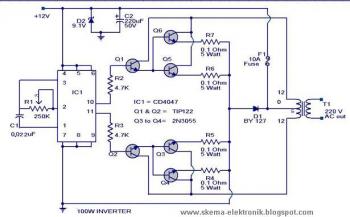Ad Code
Article épinglé
Featured Section
Formulaire de contact
Consultations de pages
Wiring Diagram for Light Switch and Outlet on the Same Circuit: Beginner’s Guide
Learn how to wire a light switch and outlet on the same circuit with this beginner-friendly guide. Includes diagrams for 3 wires, GFCI outlets, and combo switch/outlet units.
Wiring Diagram for Light Switch and Outlet on the Same Circuit: A Beginner’s Guide
Wiring a light switch and outlet on the same circuit might sound intimidating, but it’s actually a straightforward task once you understand the basics. Whether you’re doing a new installation or upgrading your home’s electrical system, this guide will walk you through the process step by step. Let’s dive into everything you need to know!
Can Light Switches and Outlets Be on the Same Circuit?
Yes, light switches and outlets can be wired to the same circuit, and it’s a common practice in home wiring setups. This allows both to share the same power source, which can be convenient for specific areas of the house like kitchens or bathrooms. However, make sure you follow local electrical codes to avoid overloading the circuit.
Wiring Basics: What You Need to Know
Before jumping into diagrams and connections, let’s break down the components:
- Hot Wire (Black or Red): Carries electricity from the power source to your switch or outlet.
- Neutral Wire (White): Returns the electricity back to the panel to complete the circuit.
- Ground Wire (Green or Bare Copper): Acts as a safety measure, directing stray electrical currents safely into the ground.
Typically, you’ll be working with 14-gauge or 12-gauge wire, depending on the amperage of your circuit. For most household circuits, 14-gauge wire (used for 15-amp circuits) is sufficient, but always check with local code requirements.
Wiring Diagram for Light Switch and Outlet in the Same Box
Power to Light Switch First
In this setup, the power source (black wire) enters the switch box first. From there, the power can either go directly to the light or be sent to the outlet.Wiring Diagram for Switch and Outlet with 3 Wires Here’s the basic layout:
- Hot Wire (Black) connects to the common terminal of the light switch.
- Another black wire connects from the light switch to the outlet’s brass terminal.
- Neutral Wire (White) connects from the light to the outlet’s silver terminal.
- Ground Wire connects from the switch and outlet to the grounding screw in both boxes.
This configuration allows you to control the light with the switch while the outlet remains powered.
Wiring a GFCI Outlet with a Light Switch
A GFCI outlet (Ground Fault Circuit Interrupter) adds extra protection in areas exposed to moisture, such as bathrooms or kitchens. Wiring a GFCI outlet alongside a switch is slightly more complex but still manageable.
- Power In: Bring power into the GFCI outlet first. The hot wire goes to the LINE terminal on the GFCI.
- Switch to Light: From the LOAD terminal, run a wire to the switch. The neutral wire will bypass the switch and connect to the light fixture directly.
This setup protects both the outlet and the switch from electrical faults.
How to Wire a Combo Switch/Outlet
A combo switch/outlet provides both a switch and outlet in a single unit, saving space and adding convenience. Here’s how to wire it:
- Hot Wire: Connect the black hot wire to the common brass terminal of the switch.
- Outlet Wiring: The white neutral wire connects to the silver terminal for the outlet.
- Ground Wire: Make sure both the switch and outlet are grounded properly using the green or bare copper wire.
With a constant power configuration, the outlet will always have power, while the switch controls the connected light.
Wiring a Single Light Switch
If you’re only working with a single light switch, the process is even simpler:
- Hot Wire: Connect the incoming hot wire to the bottom screw of the switch.
- Load Wire: Run a wire from the top screw of the switch to the light fixture.
- Neutral and Ground: Connect the neutral and ground wires accordingly.
Tips for Wiring Light Switches and Outlets
- Turn off the power: Always shut off the circuit breaker before starting any wiring work.
- Label your wires: Use labels or colored tape to mark hot and neutral wires to avoid confusion.
- Check local codes: Make sure your setup complies with local electrical regulations to ensure safety.
FAQs
1. Does Code Allow Lights and Outlets on the Same Circuit?
Yes, in many regions, it’s allowed, but check your local electrical code for any restrictions, especially for specific rooms like kitchens or bathrooms.
2. Why Is My Light Switch Not Controlling the Outlet?
You might have miswired the circuit. Double-check your connections, particularly the hot and neutral wires.
3. What Type of Wire Is Used for Outlets and Switches?
For most homes, 14-gauge wire is used for 15-amp circuits, while 12-gauge wire is used for 20-amp circuits.
Conclusion
Wiring a light switch and outlet on the same circuit is a common and useful technique for home electrical setups. Whether you're working with 3 wires, GFCI outlets, or combo switch/outlet units, following the correct wiring diagram and taking the necessary precautions will ensure everything works smoothly. Make sure to check local codes and, when in doubt, consult an electrician.
#ElectricalWiring #DIYHome #LightSwitchOutlet #HomeImprovement #ElectricalSafety

schema électrique autoradio

Onduleur 100 Watt 12V DC à 220V AC

Fixing Reedoor2.4.6.8 Data Error: An Easy Guide

schema électrique autoradio

Fixing Reedoor2.4.6.8 Data Error: An Easy Guide









0 Commentaires